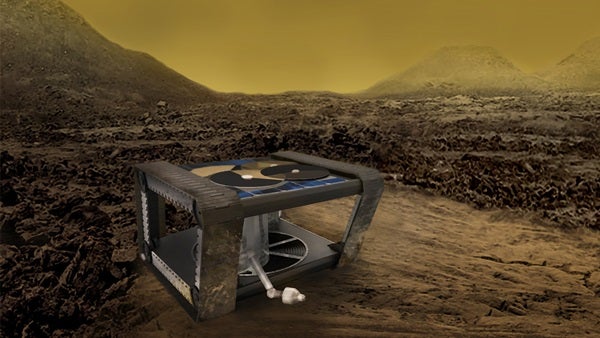Venus is a famously difficult planet to explore — but a new NASA proposal that borrows a thing or two from steampunk science fiction could make things easier.
The proposal, part of the experimental NASA Innovative Advanced Concepts (NIAC) program, calls for a rover that is minimal on electronics. Instead, it navigates more like a clockwork construct, allowing for higher temperature resistant materials to fully explore the surface of the planet for the first time.
There have been few landers to successfully make it to Venus, and no rovers. The USSR launched several probes to the planet, but only nine survived and none for more than two hours, limiting the amount of data we could obtain from our twin planet. Venus has a thick carbon dioxide atmosphere that causes a massive greenhouse effect, leaving the surface 864 degrees Fahrenheit (462 Celsius) near-uniformly across the planet. The surface of Venus is at 90 atmospheres, meaning 90 times the thickness of the air at Earth’s sea level.
This dooms any lander almost as soon as it touches down, and makes for a lot of possible errors. Instruments can and do malfunction under these extremes before the probes die entirely.
The Automaton Rover for Extreme Environments (AREE) would minimize the number of electronic instruments on board, running mostly as a series of gears with movements from World War I-like tank tracks. Levers and gears on board would take measurements from the surface, and it would be powered by a small wind turbine utilizing Venus’ extreme atmosphere to great benefit.
And — no joke — the team behind the concept are taking the steampunk idea so far as to suggest that morse code could be used to send data back to an orbiter that would then relay it to NASA. The orbiter would simply point at the spacecraft and gather data via radar.
Most NIAC projects are decades from being made, and are instead two-year research proposals to find out if such a concept is possible. So don’t expect a clockwork rover to launch this year, but the current study’s findings could pave the way for some extreme methods to use 19th century technology to forge ahead in the 21st century on our solar system’s most hellish planet.










